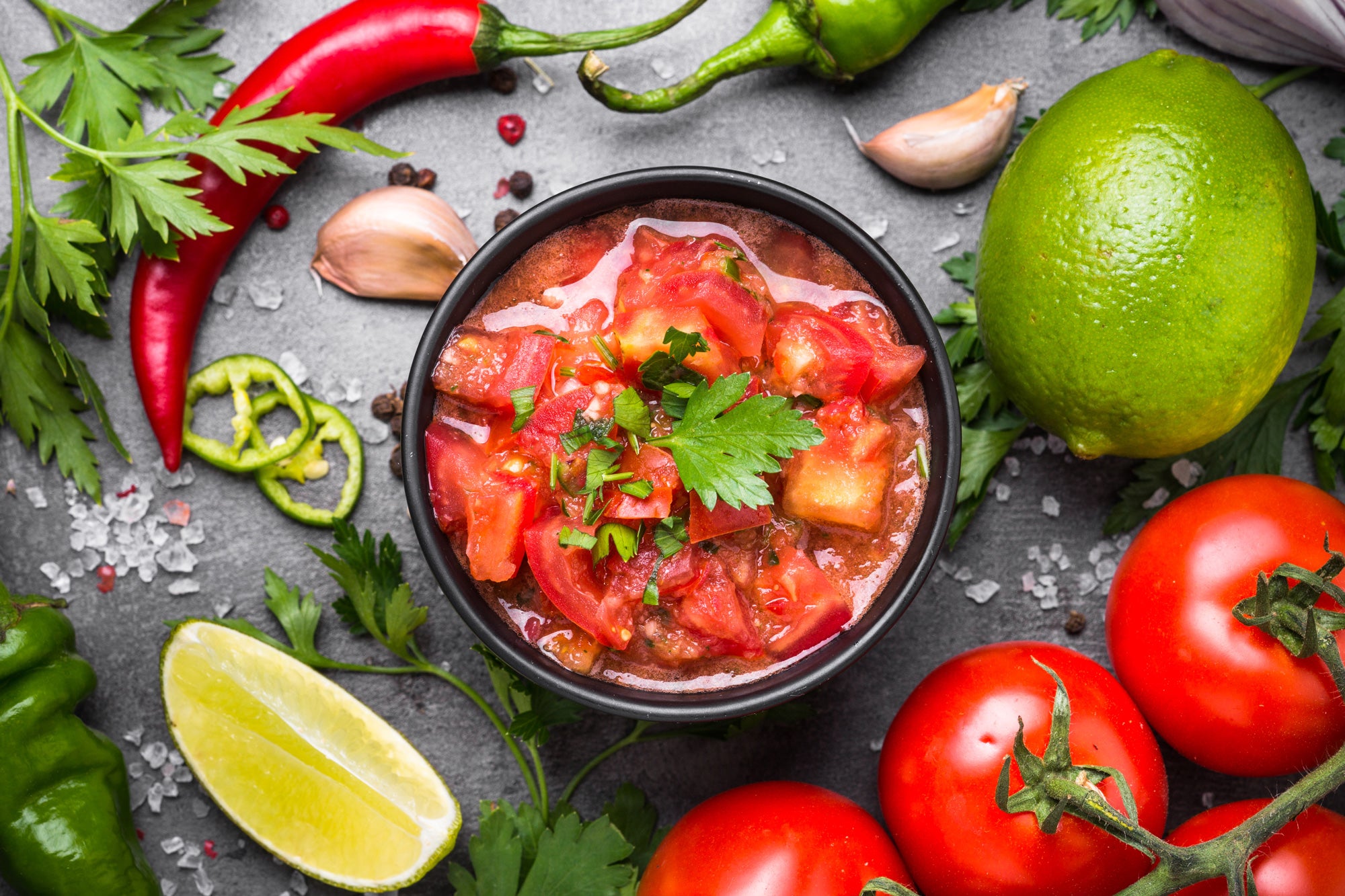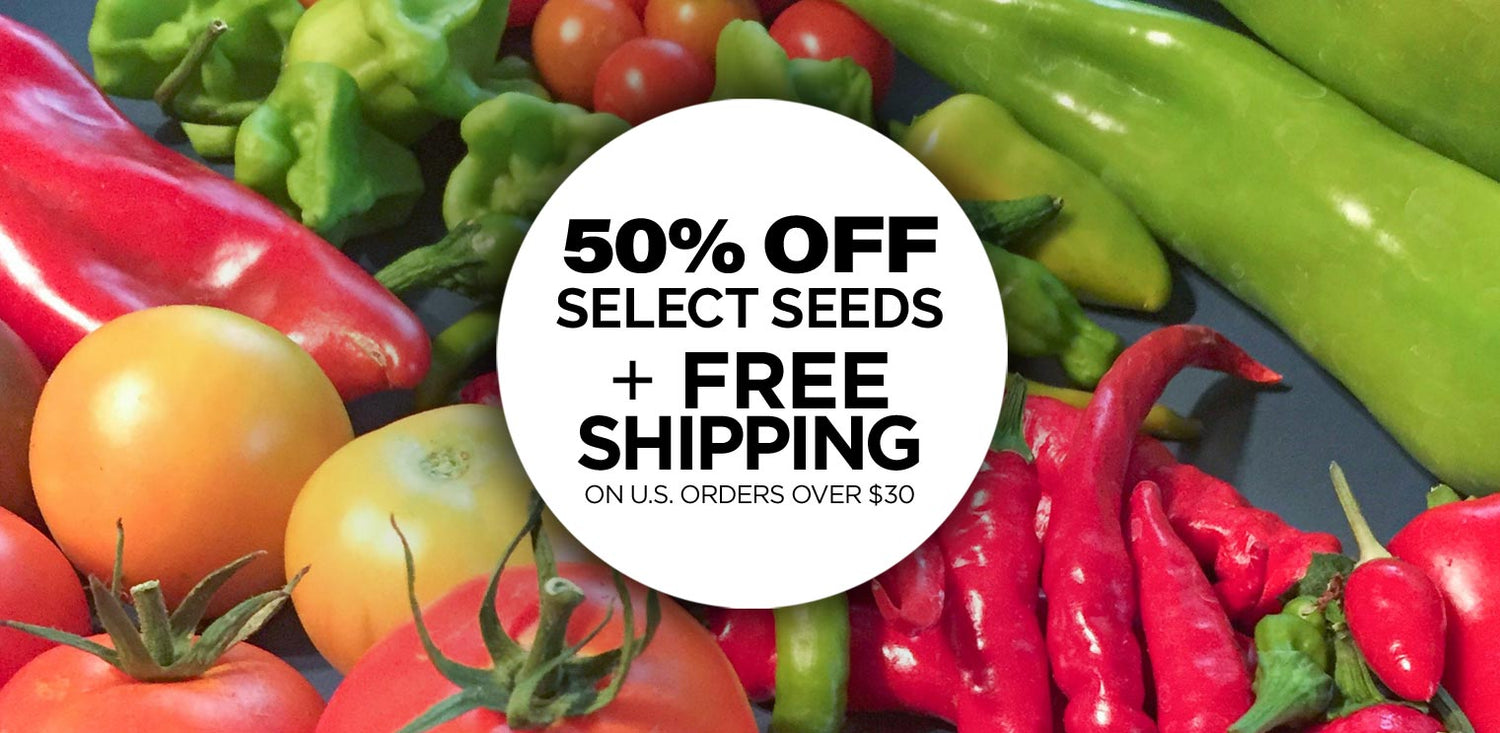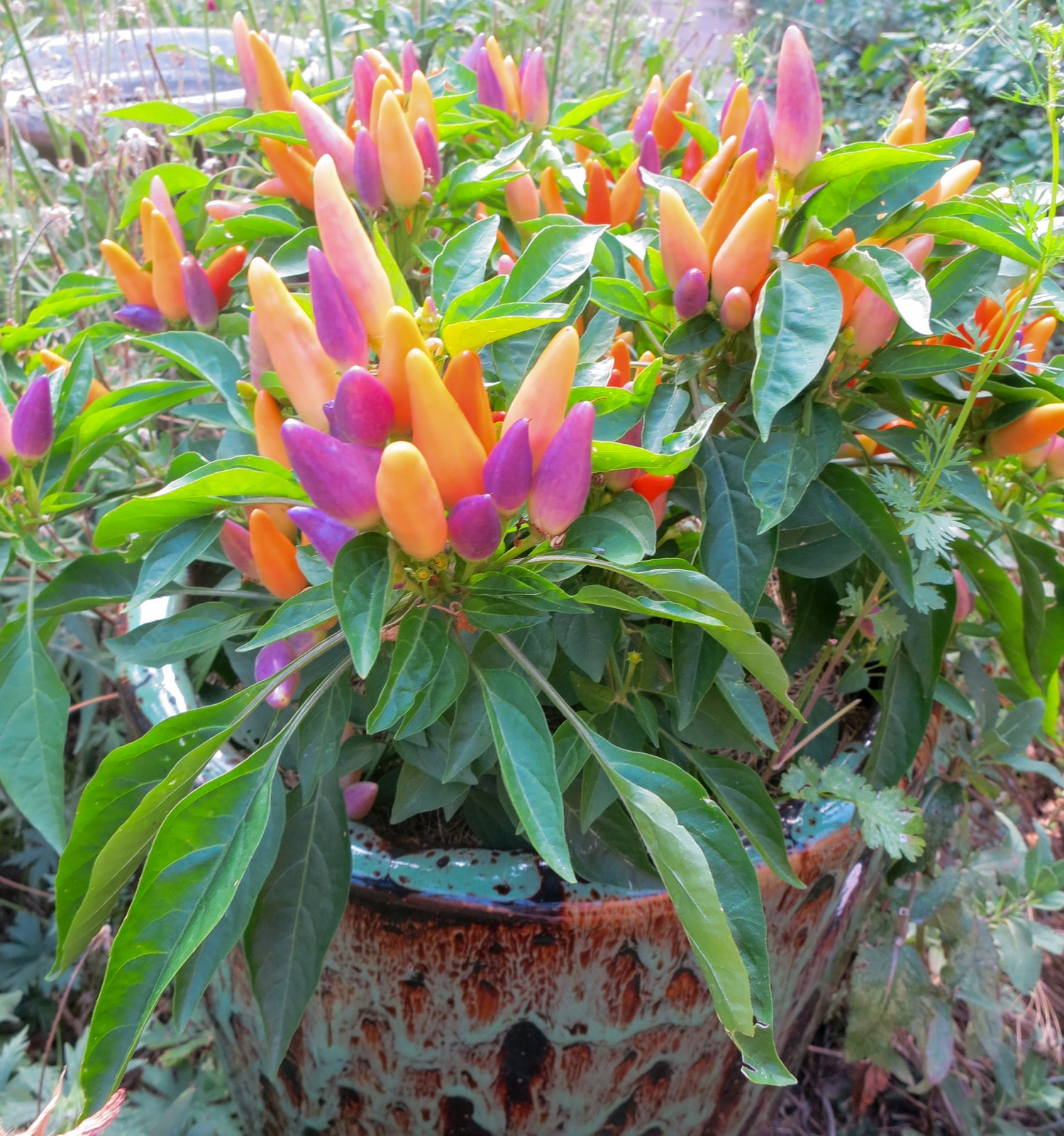
Happy October!
Here are some of our top tips for October Gardening:
1. Harvest your Peppers (and other veggies)!
Harvest your peppers and other summer vegetables like tomatoes, squash, zucchini, and eggplants. Did you know you can freeze fresh whole peppers or cored tomatoes for later use? Sometimes that's easier when they come in waves and you're short on time. October is also a great time to pick and roast your chiles to freeze or use right away – learn how to roast chile »

2. Make delicious food!
If you have time, can your tomatoes and save time by making No-Peel Tomato Sauce, pickle peppers, make salsa or hot sauce, or any of our other chile recipes.
3. Dry your Peppers:
There are so many ways to dry your peppers, it's a simple way to preserve your harvest for long-term use. Once dried you can crush them for red pepper flakes, or store them in glass jars whole, then crush and throw them into stews, burritos, tacos, you name it!
Here are lots of ways to dry peppers without a dehydrator »

4. Move pepper plants somewhere warm if cooler than 50˚ F
Peppers really don't like temperatures below 50˚ F, so if they are in pots, you can move them indoors or into a warm garage on chilly nights to keep them producing a little longer. You can even make a simple hoop house out of PVC or metal conduit and get some greenhouse film to cover peppers.

5. Does your garden need more late summer color?
Plan on planting more flowers next season! Zinnias and marigolds make perfect companion plants for peppers and tomatoes, plus they are great for late season color and pollinators. We also love growing native Echinacea amongst our vegetable garden for perennial spring/summer color, and then leave the seed heads standing in the fall and winter months for the birds. 😊🌻🐦🐞🦋🐛🌼
5. Plant Cool Season crops for fall:
It is still a good time to plant lettuce, spinach, carrots, peas, beets, radishes, green onions, and broccoli. As some vegetables are removed, tuck in some peas, green onions, radishes or lettuce to extend your harvest long into the fall months. If you live in a short season climate, it would be great to build a cold frame or hoop house to extend your growing season.

6. Make compost!
Compost is one of the best ways a gardener can add nutrients back to the vegetable garden. Use plants to grow plants! We compost all of our food scraps, leaves, grass clippings and even tissue and paper to create what they call "gardener's gold" for the garden.

At the end of October when you carve pumpkins, save the seeds for roasting, and then compost the rest! It's fun to smash pumpkins in the compost bin after Halloween.

7. Rake Leaves onto your Garden Beds:
It is also wise to rake leaves onto garden beds to help insulate, conserve moisture, and feed the soil over the winter months. It also provides habitat and food for pollinators and birds.
Happy October harvesting!





















